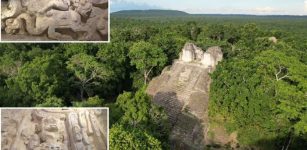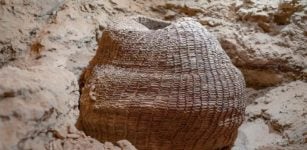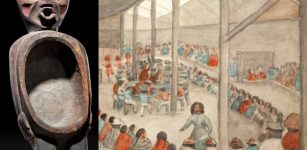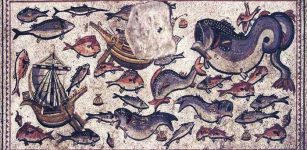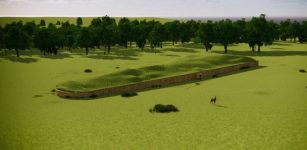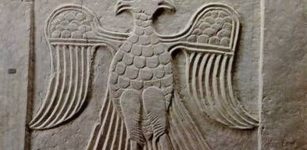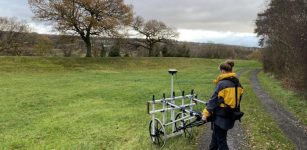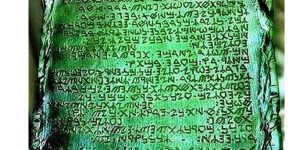Mysterious Sea People: Many Theories But Their Origin Is still Unknown
MessageToEagle.com – The whereabouts of the homeland or homelands of the so-called Sea Peoples have been endlessly debated.
In fact, not much is known about them; who they were and where they come from, no one knows for certain.
Their nationality remains a mystery as the only records we have of their activities are mainly Egyptian sources who only describe them in terms of battle (such as the record from the Stele at Tanis which reads, in part, “They came from the sea in their warships and none could stand against them”).
The term ‘Sea Peoples’ refer to nine groups of people, but the historical inscriptions give indications only to three of them, namely, the Sherden, Shekelesh, and Eqwesh.
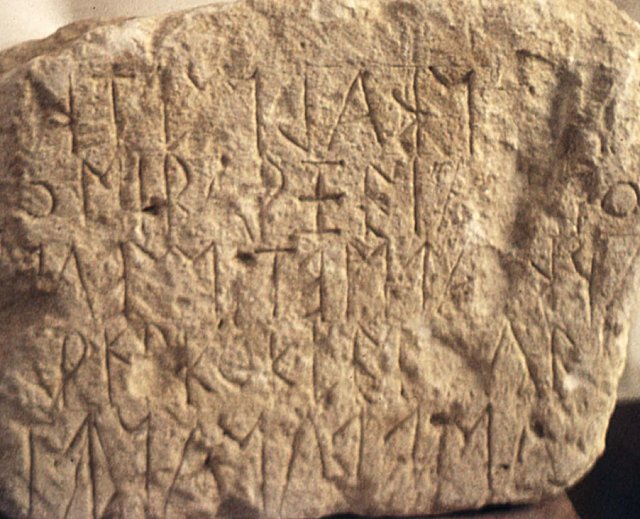
One of the theories proposes that groups of the so-called Sea People emigrated to Tell Abu al-Kharaz, (“Mound of the Father of Beads”), located in the Jordan Valley and approximately 4 km east of the Jordan River, Jordan.
Now according to researchers one of the ‘Eteocretan’ inscriptions is from the town of Praisos. It is argued that this text is written in an Indo-European language belonging to the OscanUmbrian branch of the Italic language family.
This language must have arrived in eastern Crete during the Late Bronze Age, when Mycenaean rulers recruited groups of mercenaries from Sicily, Sardinia, and various parts of the Italian peninsula.
When the Mycenaean state system collapsed around 1200 BC, some of these groups moved to the northern Aegean, to Cyprus, and to the coastal districts of the Levant.
It is also suggested that this reconstruction explains the presence of an Etruscan-speaking community in sixth-century-BC Lemnos.
What makes this theory interesting is that the Sea Peoples were present in the Mycenaean world before its collapse in the early twelfth century.
Among many theories, there is also one delivered by Swedish archaeologists and Professor Peter M. Fischer from the University of Gothenburg, Sweden, who discovered a nearly 60-meter long and well-preserved building from 1100 B.C. in the ancient settlement Tell Abu al-Kharaz located in the Jordan Valley and approximately 4 km east of the Jordan River, Jordan.
According to Fischer’s theory groups of the so-called Sea People, who derive from Southern or Eastern Europe – emigrated to Tell Abu al-Kharaz.
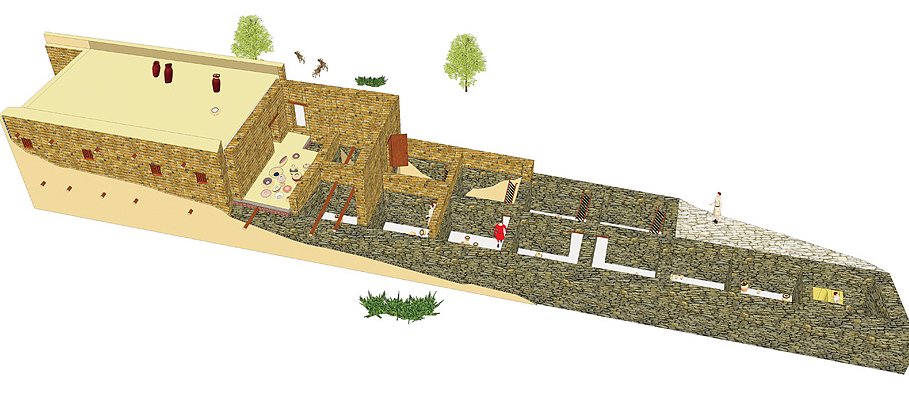
Some Sea People were literate, using a syllabic script called Cypro-Minoan. Biblical narratives and Egyptian records describe the Sea Peoples as highly organized warriors – naval raiders who harried the coastal towns and cities of the Mediterranean region between approximately 1276-1178 BC, focusing their efforts especially on Egypt.
‘We have evidence that culture from present Europe is represented in Tell Abu al-Kharaz. A group of the Sea Peoples of European descent, Philistines, settled down in the city,’ Peter Fischer said.
‘We have, for instance, found pottery resembling corresponding items from Greece and Cyprus in terms of form and decoration, and also cylindrical loom weights for textile products that could be found in central and south-east Europe around the same time.’
Tell Abu al-Kharaz is located in the Jordan Valley close to the border to Israel and the West Bank. It most likely corresponds to the biblical city of Jabesh Gilead, founded 3200 BC and lasted for almost 5 000 years.
The first excavation took place in 1989 and the most recent in autumn 2013. All in all, 16 excavations have been completed. The recently discovered building was originally built in two levels of which the bottom level is still standing with walls reaching 2.5 meters in height after more than 3 000 years.
Fischer and his team have surveyed an urban settlement that flourished three times over the 5 000 years: around 3100-2900 B.C. (Early Bronze Age), 1600-1300 B.C. (Late Bronze Age) and 1100-700 B.C. (Iron Age).
Archaeological diggings revealed well-preserved stone structures like buildings, defensive walls and thousands of complete objects produced locally or imported from south-east Europe.
‘What surprises me the most is that we have found so many objects from far away. This shows that people were very mobile already thousands of years ago,’ says Fischer.
Copyright © MessageToEagle.com All rights reserved. This material may not be published, broadcast, rewritten or redistributed in whole or part without the express written permission of MessageToEagle.com

